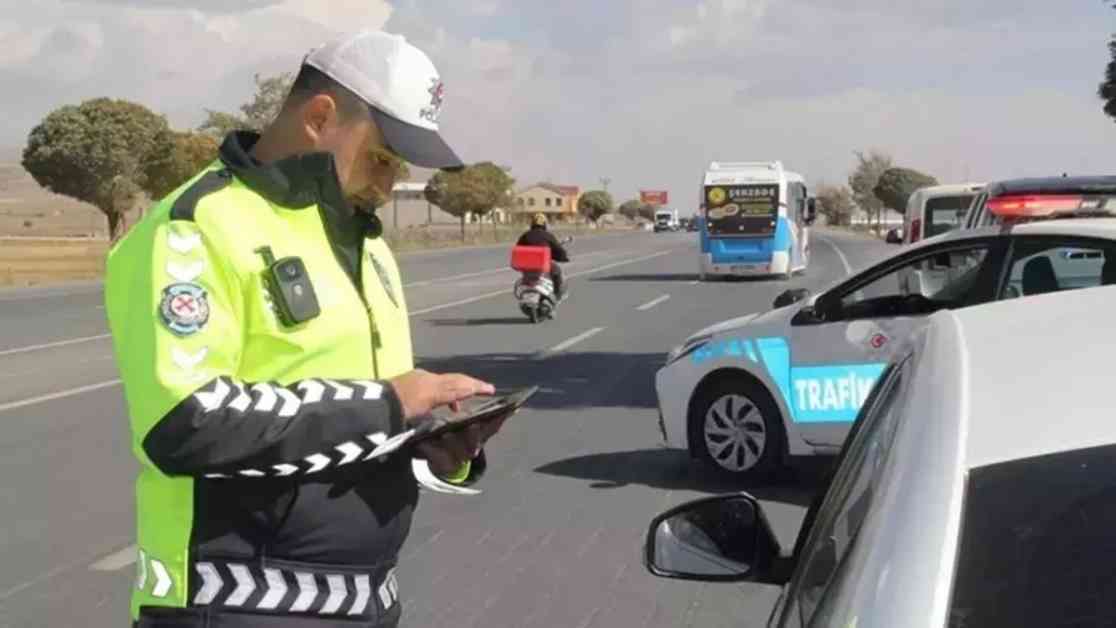Transportation Minister Yerlikaya: 2.855 Million Vehicles Inspected in October
Transportation Minister Ali Yerlikaya recently took to social media to share some important statistics regarding vehicle inspections conducted by the Traffic Police and Gendarmerie between October 10th and 17th, 2024. According to Minister Yerlikaya, a total of 2,855,748 vehicles were inspected during this period.
Illegal Use of Warning Devices
During the inspections, it was discovered that 361 drivers were using warning devices (flashing lights or sirens) that are not permitted by law. These drivers were consequently penalized for their actions.
Traffic Violations
Furthermore, a significant number of drivers were found to be in violation of various traffic laws. Among them, 137,864 drivers were caught speeding, 29,374 vehicles had not undergone mandatory periodic inspections, 23,624 drivers were not wearing seat belts, 19,103 drivers were operating vehicles without valid driver’s licenses, and 10,815 vehicles did not have compulsory third-party liability insurance. As a result, a total of 515,232 vehicles and drivers were penalized for these infractions.
Preventive Measures
Minister Yerlikaya also highlighted the ongoing efforts to prevent traffic violations and accidents. Traffic personnel are actively monitoring the City Security Management System cameras to enforce compliance with traffic regulations, particularly regarding red lights, right of way at intersections, seat belt usage, helmet wearing, and prohibition of cell phone use while driving. These measures are aimed at reducing the incidence of traffic violations and improving road safety.
Continued Vigilance
The Transportation Ministry’s commitment to preventing traffic violations and accidents remains steadfast. Continuous monitoring and enforcement efforts are in place to ensure that road users comply with traffic laws and regulations. Minister Yerlikaya emphasized that the primary goal of these measures is to ensure the safety of all road users and to prevent unnecessary accidents.
Subheadings:
Efforts to Improve Road Safety
Penalizing Violations
Enhancing Enforcement Measures
Efforts to Improve Road Safety
The Transportation Ministry’s initiatives to enhance road safety encompass a wide range of activities and measures. In addition to conducting regular vehicle inspections, the ministry also focuses on raising awareness among drivers and pedestrians about the importance of adhering to traffic rules and regulations. Educational campaigns, public service announcements, and outreach programs are utilized to promote safe driving practices and responsible road behavior.
Moreover, the ministry collaborates with law enforcement agencies to identify high-risk areas and implement targeted interventions to address specific traffic issues. By analyzing traffic data and trends, authorities can allocate resources effectively and deploy enforcement measures where they are most needed. This proactive approach helps to mitigate potential risks and reduce the likelihood of accidents on the roads.
Penalizing Violations
Enforcing traffic laws and penalizing violators are key components of the ministry’s strategy to improve road safety. Through rigorous enforcement efforts, drivers who engage in reckless or negligent behavior are held accountable for their actions. By imposing fines, license suspensions, or other penalties, the ministry aims to deter future violations and encourage compliance with traffic regulations.
Additionally, the ministry works closely with the judiciary to ensure that offenders are prosecuted and punished in accordance with the law. By collaborating with legal authorities, the ministry seeks to establish a deterrent effect that discourages drivers from committing traffic violations. This coordinated approach reinforces the importance of upholding traffic laws and reinforces the principle of accountability among road users.
Enhancing Enforcement Measures
In order to enhance the effectiveness of enforcement measures, the ministry is constantly seeking to improve its capacity and capabilities. This includes investing in technology, training personnel, and upgrading infrastructure to better monitor and control traffic flow. By deploying advanced surveillance systems, automated enforcement tools, and real-time monitoring solutions, the ministry can more effectively detect violations and respond promptly to emerging threats.
Furthermore, the ministry is exploring innovative approaches to enhance enforcement measures, such as incorporating artificial intelligence, data analytics, and predictive modeling into its operations. By harnessing the power of technology and data-driven insights, the ministry can optimize its enforcement efforts, target high-risk areas, and prevent potential traffic incidents before they occur. This proactive and preventive approach is essential for ensuring the safety and security of all road users.
Conclusion:
In conclusion, the Transportation Ministry’s recent announcement regarding the inspection of 2.855 million vehicles in October underscores the government’s commitment to improving road safety and reducing traffic violations. Through a combination of preventive measures, enforcement actions, and public awareness campaigns, the ministry is working diligently to create a safer and more secure environment for all road users. By continuing to prioritize road safety initiatives and invest in innovative solutions, the ministry aims to reduce accidents, injuries, and fatalities on the roads, ultimately contributing to a safer and more sustainable transportation system for all.





















